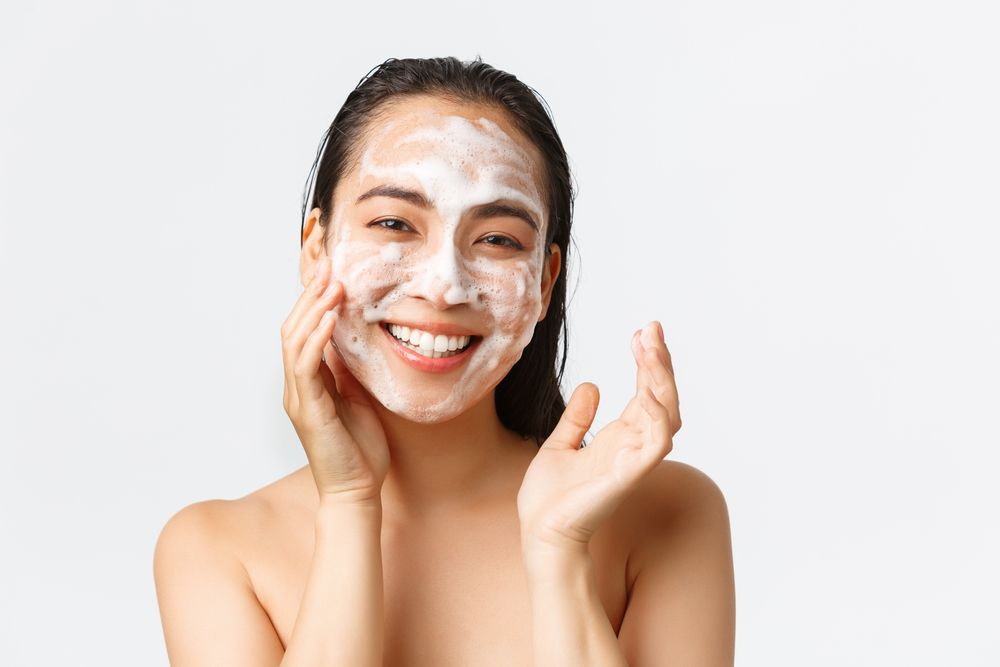Your facial cleanser is the cornerstone of your skincare routine — the product you use morning and night to clear away dirt, oil, makeup, and environmental pollutants. But with countless options on the market, ranging from gentle micellar waters to foaming washes and exfoliating scrubs, how do you know which one is right for your skin?
Choosing the wrong cleanser can leave your skin feeling tight, dry, or irritated — or worse, clogged and prone to breakouts. In this guide, we break down the key steps to selecting the best facial cleanser for your skin type and needs, so you can build a routine that supports clear, healthy, and balanced skin.
1. Understand Why Cleansing Matters
Cleansing isn’t just about removing dirt — it’s about prepping your skin for the next steps in your skincare routine. A good cleanser:
-
Removes excess oil, makeup, and impurities.
-
Maintains the skin’s natural moisture barrier.
-
Balances the skin’s pH to prevent irritation or breakouts.
-
Prepares your skin to absorb serums, moisturizers, or treatments effectively.
Skipping cleansing or using the wrong product can leave buildup on your skin, dull your complexion, and contribute to long-term skin issues.
2. Identify Your Skin Type
Before shopping for a cleanser, you need to know your skin type — this determines what formulas will work best.
Common Skin Types:
-
Oily skin: Shiny, prone to enlarged pores and breakouts.
-
Dry skin: Feels tight, rough, or flaky, especially after washing.
-
Combination skin: Oily in the T-zone (forehead, nose, chin), drier on cheeks.
-
Normal skin: Balanced, not too oily or dry, minimal sensitivity.
-
Sensitive skin: Easily irritated, prone to redness or stinging.
Understanding your skin’s natural state helps you avoid products that are too harsh or too mild.
3. Know the Different Types of Cleansers
Cleansers come in various formulations, each designed to suit specific skin types and concerns.
Gel Cleansers:
-
Lightweight, often foaming.
-
Best for oily or acne-prone skin.
-
Help remove excess oil and clear clogged pores.
Cream or Lotion Cleansers:
-
Thick, rich textures.
-
Best for dry or sensitive skin.
-
Provide extra hydration while cleansing.
Foam Cleansers:
-
Start as liquid or cream, lather into a light foam.
-
Good for combination or oily skin.
-
Can be drying if overused.
Oil Cleansers or Cleansing Balms:
-
Oil-based formulas that dissolve makeup and sunscreen.
-
Suitable for all skin types, including oily skin (yes, really!).
-
Often used as the first step in a double-cleanse routine.
Micellar Water:
-
No-rinse cleansing water with tiny oil molecules.
-
Best for sensitive or dry skin, light makeup removal, or quick refreshes.
Selecting the right cleanser type ensures it works effectively without stripping your skin.
4. Pay Attention to Ingredients
Beyond texture, the ingredient list tells you a lot about what a cleanser will do.
Ingredients That Benefit Oily or Acne-Prone Skin:
-
Salicylic acid: Exfoliates inside pores, reduces breakouts.
-
Tea tree oil: Offers natural antibacterial properties.
-
Clay: Absorbs excess oil.
ADVERTISEMENT
Ingredients That Benefit Dry or Sensitive Skin:
-
Hyaluronic acid: Provides hydration.
-
Glycerin: Helps attract moisture.
-
Ceramides: Support the skin barrier.
Ingredients That Benefit Dull or Aging Skin:
-
Alpha hydroxy acids (AHAs): Gently exfoliate to brighten skin.
-
Peptides: Support skin firmness.
Reading labels and understanding what ingredients do helps you choose a cleanser that aligns with your skincare goals.
5. Consider Double Cleansing
If you wear heavy makeup, sunscreen, or live in a polluted environment, double cleansing can be a game changer.
How It Works:
-
Step 1: Use an oil-based cleanser or balm to dissolve makeup, sunscreen, and oil.
-
Step 2: Follow with a water-based gel, cream, or foam cleanser to remove remaining impurities.
Double cleansing ensures a deep clean without overstripping, leaving skin refreshed and ready for serums or moisturizers.
6. Avoid Harsh or Irritating Formulas
Some cleansers, particularly those marketed as “deep-cleansing” or “anti-acne,” can be too harsh for everyday use.
What to Watch Out For:
-
Sulfates (SLS/SLES): Strong foaming agents that can strip moisture.
-
Alcohol (denatured): Can dry and irritate sensitive skin.
-
Fragrance (synthetic): May trigger irritation or allergic reactions.
If your skin feels tight, squeaky-clean, or overly dry after cleansing, you may need a gentler product.
7. Choose Based on Your Lifestyle
Your skincare routine should fit your habits.
For Quick, Low-Maintenance Routines:
-
A single gentle cleanser may be enough.
-
Micellar water works well if you’re frequently on the go.
For Complex Routines or Heavy Makeup Use:
-
Consider double cleansing or pairing oil-based and water-based products.
-
Prioritize formulas that remove makeup efficiently without over-scrubbing.
The best cleanser is one you’ll consistently use — so pick a product that fits seamlessly into your daily routine.
8. Test and Adjust
Even after doing your research, sometimes a product just doesn’t work for your skin.
How to Test:
-
Patch test on a small area (like your jawline) for a few days.
-
Watch for signs of irritation, dryness, or breakouts.
-
Introduce one new product at a time so you can track reactions.
Be willing to adjust if your skin changes with the seasons, environment, or age.
Pro Tips for Healthy Cleansing Habits
Even the best cleanser can’t work magic if you’re using it the wrong way.
-
Use lukewarm water: Hot water strips moisture, while cold water doesn’t clean effectively.
-
Be gentle: Avoid aggressive scrubbing or rough towels.
-
Limit washing to twice a day: Over-cleansing can disrupt your skin barrier.
-
Pat dry, don’t rub: Helps prevent irritation and redness.
-
Follow up with moisturizer: Seal in hydration after cleansing to protect your skin.
Good technique combined with the right product leads to the healthiest, happiest skin.

